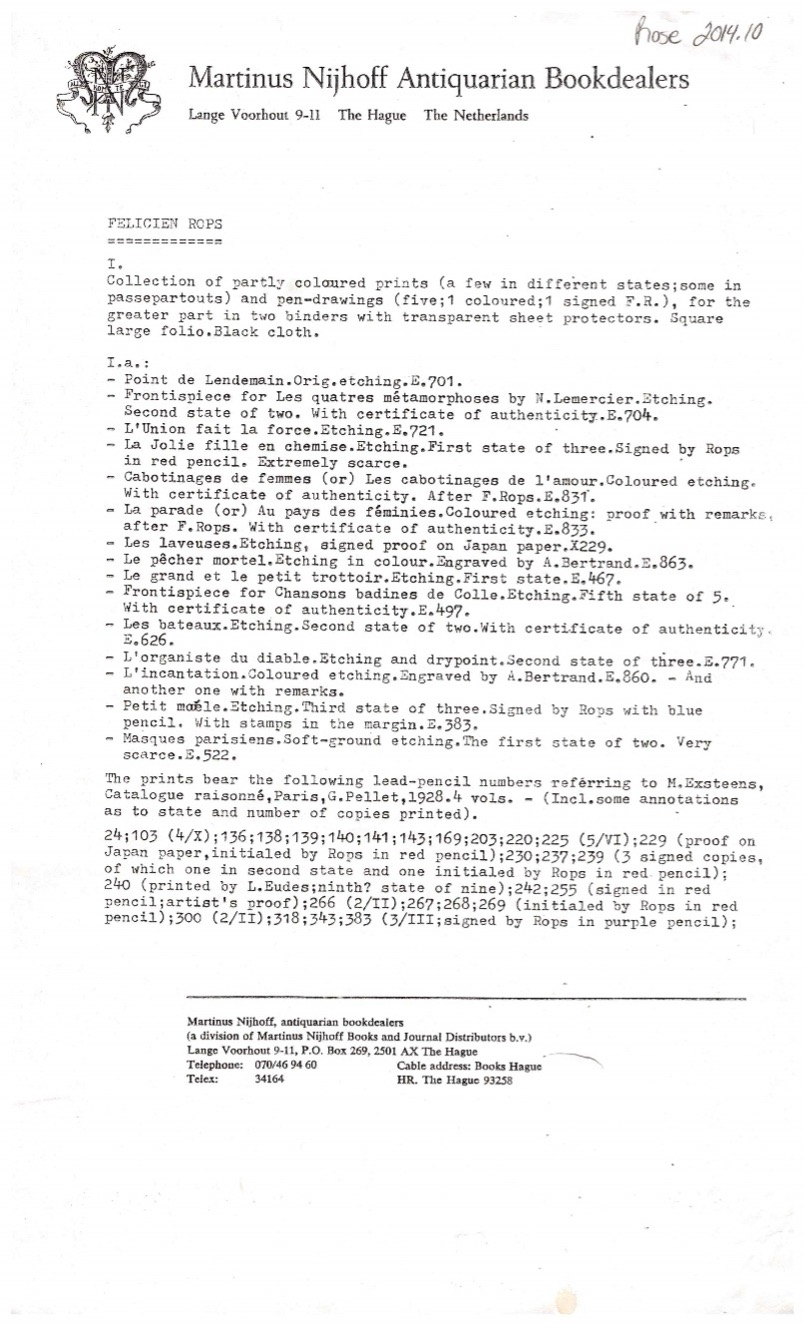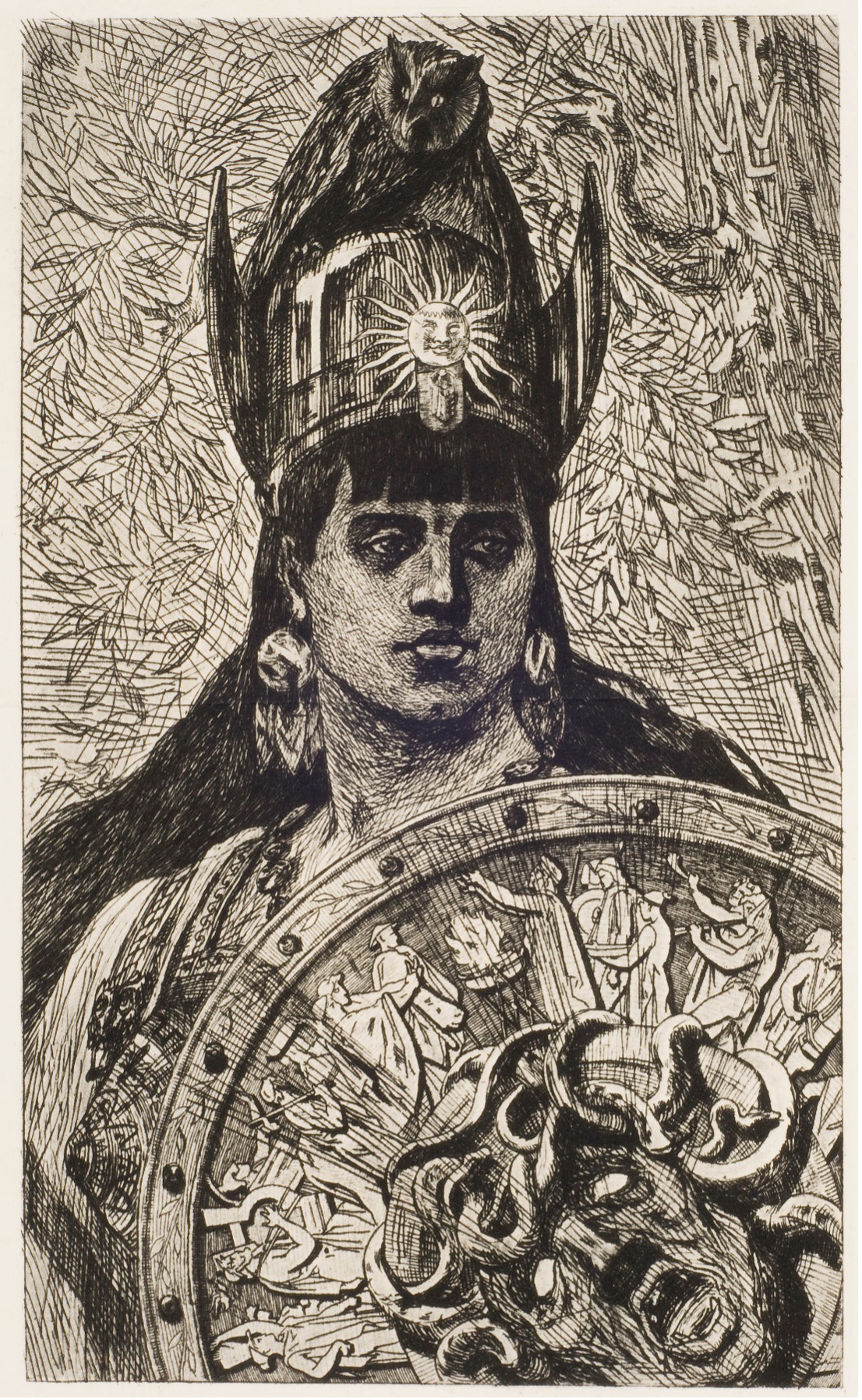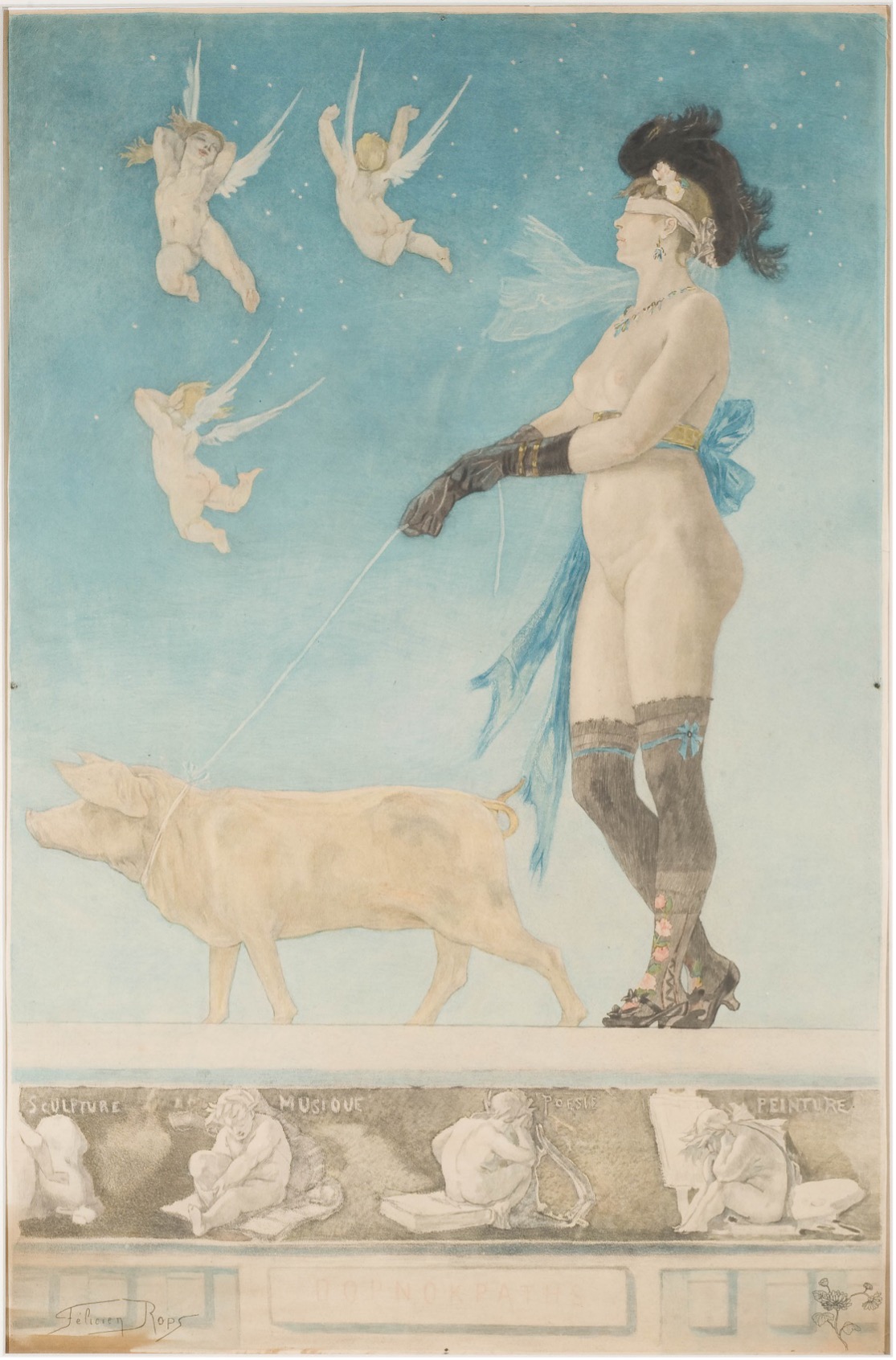


Sometimes, when objects are found within collections, the best solution is to transfer them to another institution. In 2014, we were contacted by the Manuscript, Archives, and Rare Book Library at Emory’s Robert W. Woodruff Library. Library staff had located a group of materials related to Belgian artist and printmaker Félicien Rops (1833-1898), which included over 150 prints and drawings. While the library has excellent facilities, it simply made more sense for the prints and drawings to be transferred to the Carlos Museum, where they could be properly cataloged and studied.
The following summer, we were fortunate to have then Emory student Hannah Rose Blakeley intern with Works on Paper Curator Dr. Andi McKenzie. After spending two months cataloging and researching the 164 prints and drawings transferred from the library, Hannah Rose wanted to continue her work. Using grants and other resources provided by Emory, Hannah Rose was able to spend the next year expanding her research on Rops. Her project culminated in a robust online exhibition.
As part of her research, Hannah Rose did a fabulous job noting any collector’s marks on the prints and drawings. For the ones that had marks, she was able to determine which collectors had owned the works in the past. What we were still missing was the story of how and when the materials ended up at the Emory library.
One clue was a typewritten itemized list from Martinus Nijhoff Antiquarian Bookdealers of The Hauge, Netherlands. The company was founded in 1853 by the eponymous Martinus Nijhoff (1826-1894) and continued as a family business until 1970. During this time, American university and college libraries were aggressively expanding their collections. Companies like Martinus Nijhoff were able to provide this growing market with European books, periodicals, and (sometimes) prints. The US Congress approved an addition to the Higher Education Act in 1965 which provided funds to American research libraries specifically for acquisitions. The following year, in 1966, the Library of Congress set up the National Program for Acquisitions and Cataloging (NPAC). This program included 15 foreign offices staffed by Library of Congress employees. The NPAC location in the Netherlands was situated inside the offices of Martinus Njihoff.
Within the Martinus Nijhoff list the Carlos received from the library is a section detailing a “collection of books about Rops…or containing plates and frontispieces by the artist”. The most recent date of publication from the list is 1972. In 1975, the Martinus Nijhoff company was broken up and dismantled. Therefore, the group of materials detailed in the list must have been acquired from Martinus Nijhoff sometime between 1972 and 1975. I suspect that Emory University was one of Martinus Nijhoff’s customers and purchased the materials directly from the bookseller. Once it made its way to Atlanta, the non-book material may have been deemed inappropriate or irrelevant and put aside in storage.
We may never know exactly how the Rops material wound up at what is now the Stuart A. Rose Manuscript, Archives, and Rare Book Library. But with that transfer of material, the Carlos Museum is now home to the largest collection of works by Félicien Rops in North America.




